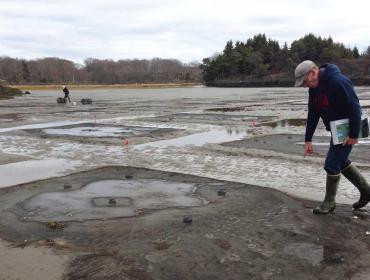Posted May 17, 2019
Last modified May 17, 2019
By Patrice McCarron
Editor’s note: Patrice McCarron is executive director of the Maine Lobstermen’s Association. This letter was originally sent to association members, and is reprinted with permission.
After a long and difficult week in late April in which the National Oceanographic and Atmospheric Administration’s Marine Mammal Take Reduction Team met to address protections for the endangered right whale, the Maine lobster fishery now has a sense of what the future holds.
There were some hard battles along the way, in which we lobster industry advocates fought to ensure a viable Maine fishery, both for today’s lobstermen and for future generations.
On day three of the take reduction team’s meeting, Sam Rauch, the deputy assistant administrator for the National Marine Fisheries Service (NMFS), addressed team members. He did not mince words in asserting that the team’s job is to identify measures to reduce right whale serious injury and mortality from lobster gear by 60 percent to 80 percent. But he was equally clear that the lobster fishery would have the opportunity to shape how that reduction is achieved.
If we, the Maine lobster industry, fail in that task, NMFS would begin its rulemaking process without our advice and decide what measures we would have to take.
After days of considering a variety of alternatives, Maine agreed to reduce its risk to right whales by 60 percent, as long as other states and lobster fishing areas agreed to do the same.
To achieve this, Maine has committed to a 50 percent reduction in vertical lines. Additional elements of Maine’s plan include fishing “toppers” on buoy lines (stronger rope on bottom, weaker rope on top), unique marking of Maine’s buoy lines, and improved reporting.
Other states and lobster fishing areas will devise their own plans to meet this 60 percent risk reduction.
Our biggest accomplishment this week came in removing the “ropeless fishing” proposal from this round of whale rules. The conservation community was clear that ropeless fishing was their goal. While this strategy should be explored as a solution for areas where large aggregations of whales overlap with important fishing grounds, such as the Gulf of St. Lawrence and Cape Cod Bay, it should not be pursued for areas like Maine where whale sightings are rare. There is no feasible economic or operational model for ropeless fishing in Maine.
Maine now understands exactly what the lobster fishery has to do to comply with the federal goal. The Maine Lobstermen’s Association will work with state Department of Marine Resources (DMR) and lobstermen on how best to remove 50 percent of our vertical lines from the water.
Make no mistake: the cuts are deep and the work will be extremely challenging. It will require us to rethink much of how our fishery is executed. But this approach gives lobstermen some flexibility to develop a broad set of techniques so that Maine’s diverse lobstering operations, both large and small, can remain viable.
By making these changes, in combination with new gear marking and reporting requirements, Maine will be able to credibly establish the extent to which Maine lobster gear is—and is not—involved in harming whales. Maine will confirm that its lobster fishery is a safe fishery for right whales. In doing so, it is our hope that we will continue to have a strong fishery to pass on to our children.
The industry owes thanks to lobstermen Kristan Porter, Dwight Carver, Mike Sargent, and John Williams, and to DMR’s Erin Summers, for their passion and energy in fighting to maintain a bright future for Maines’ lobstermen at the take reduction team meeting.



